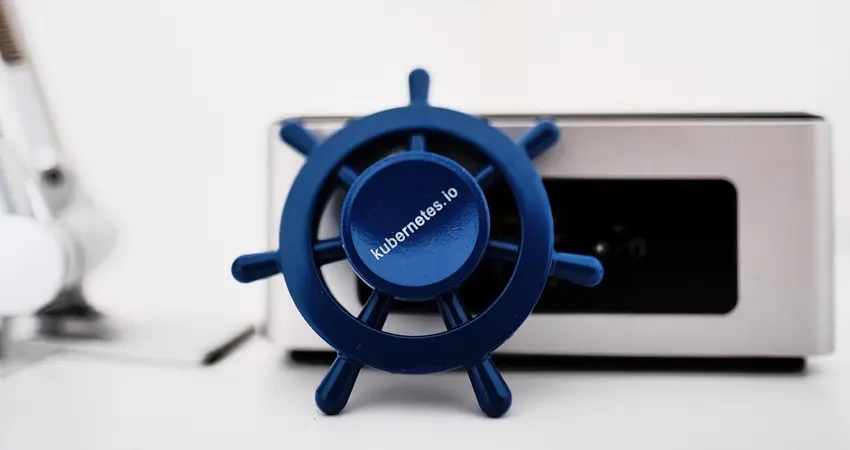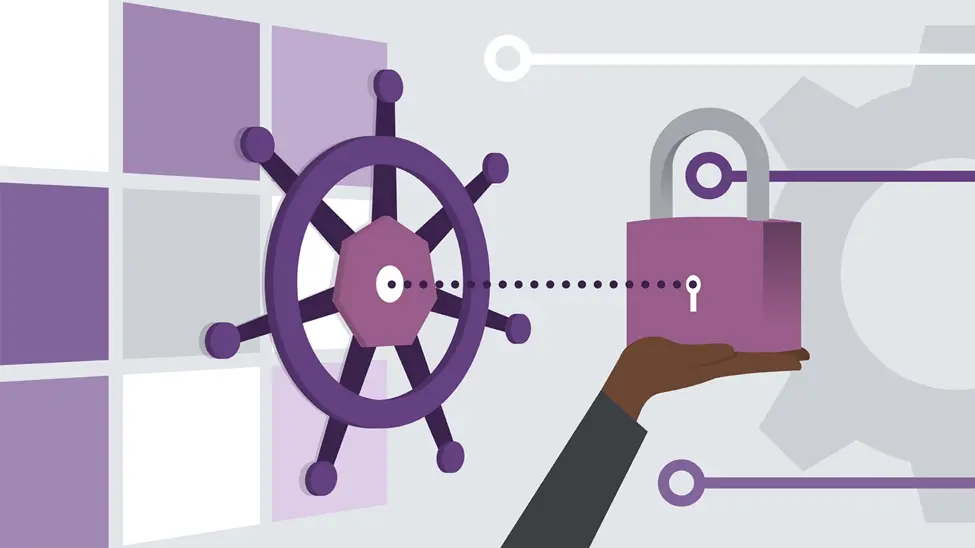
Kubernetes has quickly gained traction as a platform for managing microservices architectures due to its capacity to help businesses with containerised applications’ deployment, management, and scalability. Cloud Native Survey indicated that:
“96% of firms are either actively utilizing or investigating Kubernetes, representing a significant increase from previous surveys. 73 % of respondents use Kubernetes in production, making it widely adopted by major organizations and rapidly expanding in developing technology hotspots like Africa.”
Kubernetes’ scalability, adaptability, and mobility are just a few advantages it offers microservices. Kubernetes allows businesses to swiftly adapt to shifting market demands and requirements by simplifying the deployment and management of containerized applications across various cloud providers and environments.
While Kubernetes has numerous advantages, it also has some possible disadvantages and issues that businesses may want to consider before adopting. Therefore, companies should consider the benefits and drawbacks together in utilizing Kubernetes for their microservices architecture and ensure they have the resources and knowledge to administer the platform efficiently.
What is Microservices Architecture?

Microservices architecture is an architectural style used for application development. It involves breaking down large applications into smaller applications that have their own set of specific responsibilities. These microservices-based applications can serve single-user requests by calling on many internal microservices to create a response.
Containers are a great example of microservices architecture because they let you develop the services/application without having much to worry about dependencies. These are also helpful in making modern cloud-native applications as microservices.
Some Microservices Architecture Use Cases
Below are some microservices architecture use cases:
- Website migration: To move a complex website from a monolithic platform to a container-based and cloud-based platform.
- Media content: To store videos and image assets in a scalable object storage system and serve them directly to mobile or web.
- Transactions and invoices: To separate ordering and payment processing as independent units, ensuring that payments are still accepted even if invoicing doesn’t work.
- Data processing: To extend cloud support for modular data processing services
Pros and Cons of Kubernetes for Microservices

Kubernetes is a free and open-source container orchestration system that is gaining popularity for deploying, scaling, and managing microservices. The use of Kubernetes for managing microservices comes with benefits and drawbacks, just like any other type of technology.
Pros of Using Kubernetes for Microservices
Kubernetes simplifies deploying, managing, and scaling containerized systems, a massive benefit for microservices. Here, we’ll go deep into why Kubernetes is an excellent fit for managing microservices, pointing out how the platform excels in this role.
Automated Management of Containerized Applications
Kubernetes’ primary value is in automating the process of managing containerized applications. With Kubernetes, businesses can determine the ideal configuration of their applications down to the number of operating instances of each container, the number of available resources, and the network topology.
The containers are managed by Kubernetes automatically, checking that they are functioning as expected and increasing or decreasing their number in response to demand.
Developers and operations teams may benefit significantly from this automated administration of containerized apps. Kubernetes eliminates the need for time-consuming manual configuration and management of containers, allowing teams to focus on higher-level, strategic initiatives.
Regenerative Capabilities
Kubernetes’s capacity for self-repair is another significant advantage. Kubernetes checks the status of containers and replaces unhealthy ones with new ones or restarts them if necessary. This makes it so programs keep functioning normally despite problems.
If a container stops responding, say because of a flaw in the software or a hardware failure, Kubernetes can detect this and either restart the container or swap it out for a working copy. This guarantees the application will continue running and responding to user requests even if some containers fail.
Scalability and Resilience
For microservices, Kubernetes offers robust scalability and fault tolerance. Kubernetes makes it simple to adjust the number of active containers in response to fluctuations in workload. This allows businesses to swiftly adapt to unexpected influxes of customers or other situations that need more human resources.
Kubernetes also has built-in redundancy and load balancing to keep your applications running smoothly during an outage. These characteristics keep applications up and operational in the face of failures or other challenges.
Improved Resource Utilization
Organizations may better use their computer and human resources with the help of Kubernetes. Kubernetes guarantees productive resource use by automating container management.
For instance, Kubernetes may intelligently distribute containers throughout a cluster’s nodes, operating each where it will have the most negligible impact on system performance and the most outstanding availability of necessary resources. In the long run, this can maximize efficiency and reduce waste.
Portable and Flexible
Kubernetes can function on public and private clouds and on-premises data centers because of its portability and adaptability. As a result, businesses may pick the finest infrastructure for their requirements and easily migrate between infrastructure providers.
Kubernetes also offers a great deal of setup leeway and customization potential. Because of this, the platform may be adjusted to meet individual businesses’ security, networking, and application performance standards.
Kubernetes offers several advantages for companies that want to develop and launch microservices, and despite the potential difficulties in deploying and administering it, it remains a viable solution.
Cons of Using Kubernetes for Microservices

While Kubernetes offers numerous advantages for microservices, it has drawbacks and difficulties. In the following paragraphs, we’ll take a deep dive into the downsides of utilizing Kubernetes for microservices, bringing to light some potential problems and pitfalls businesses may encounter if they switch.
Complexity and Learning Curve
Kubernetes’ complexity and the high learning curve are one of its biggest obstacles. It may take some time and effort to become proficient with all of Kubernetes’ features and components due to the complexity of the platform. When working with fewer people or fewer resources may be very difficult.
Developers and operations teams may need to become familiar with Kubernetes APIs and commands to set up networking and storage, handle persistent data management, and deal with security and compliance concerns. Training and education, as well as regular maintenance and assistance, might be costly for this to achieve.
Scalability and Performance
While Kubernetes is built to help businesses scale and improve their microservices’ performance, it has its challenges. Kubernetes’ cost and delay in managing containers, for instance, can affect application performance.
It’s also difficult to scale and manage many containers, especially when working with complicated applications that rely on various interconnected parts.
To guarantee that applications can withstand peaks in traffic or demand, businesses may need to invest in supplementary infrastructure, such as load balancers.
Resource Requirements
Kubernetes may demand system resources, necessitating large amounts of memory and disk space. More hardware or cloud resources may be needed to run the platform, especially if an organization plans to run many containers and apps.
Furthermore, as the platform develops in complexity and the number of apps and containers increases, it may demand more human resources to administer and maintain. This might be especially difficult for smaller teams or businesses with fewer resources.
Safety and Regulations
Kubernetes might provide companies with unique security and compliance concerns when working with sensitive data or in highly regulated sectors.
Organizations must guarantee containers’ isolation and security, regulate user access to data and applications, and fulfill regulatory mandates.
Kubernetes itself, if not adequately protected or maintained, might also be the target of an assault. Encryption, access restrictions, and monitoring are just some additional security measures businesses may need to implement to keep their data and apps safe.
Vendor Lock-In
Finally, if a company decides to use a single cloud provider or vendor for its Kubernetes implementation, they risk becoming locked into that provider or vendor. Despite Kubernetes’s portability and adaptability, some cloud providers may provide additional functionality not shared with other platforms.
It might be challenging for businesses to switch to different platforms or providers if they have invested in extra tools and technologies to support their Kubernetes implementation. This could result in vendor lock-in if businesses cannot swap suppliers or platforms in the future.
Streamline Microservices Management with Taikun’s Kubernetes Deployment Assistance!
Kubernetes is a powerful tool for managing containerized applications at scale, but it comes with potential downsides and challenges when used for microservices. To ensure effective and secure implementation of Kubernetes, businesses often allocate extra resources for training, infrastructure, and security measures.
Taikun can help businesses overcome these challenges by providing features and capabilities such as an intuitive user interface, automatic scaling, and integrated monitoring and logging. This streamlines the administration of microservices and reduces the time and effort needed to learn Kubernetes, ultimately enhancing the efficiency and security of software.
Ultimately, Taikun offers a robust framework for managing microservices at scale, enabling businesses to focus on developing and releasing software with confidence. Give Taikun a try and experience how easy it can be to manage container deployments in any cloud environment.


